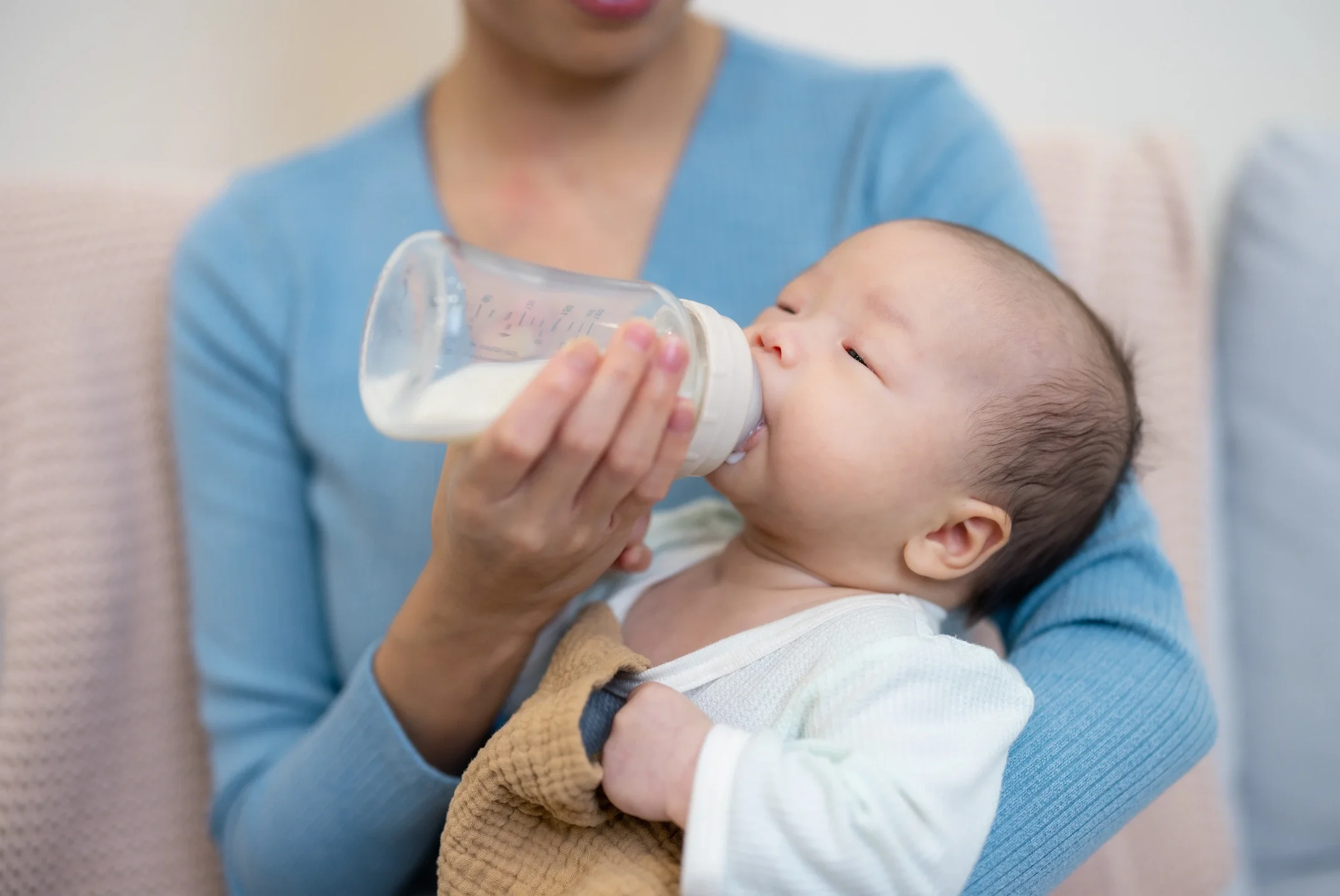Infant Formula: Safe Preparation & Night Feeds (0–12 months)
Responsive bottle-feed: slow flow, upright position.
Whether you’re fully formula‑feeding or topping up expressed milk, this short guide shows you how to prepare bottles safely, set up nights so you can feed half‑asleep without cutting corners, store and warm feeds when needed, and troubleshoot common hiccups. It follows current UK advice and is designed to be skim‑friendly at 3am.
Essentials & safety
In the first year, most babies only need a whey‑based first infant formula unless a clinician advises otherwise. Because powdered formula isn’t sterile, safe preparation is essential to reduce infection risk (including Cronobacter). At night, aim for a set‑up you can do half‑asleep while still meeting safety steps.
Safe prep: step‑by‑step
Wash your hands and clean the surface.
Sterilise bottles, teats and rings.
Boil fresh cold‑tap water and leave no longer than 30 minutes so it remains ≥70°C.
Pour the hot water into the sterilised bottle to the required volume.
Add level scoops of powder using the tin’s scoop.
Cap and swirl gently until dissolved.
Cool quickly (lid on) under cold running water or in a jug of cold water until body‑warm.
Test on your wrist and feed responsively.
Discard any leftovers at the end of the feed.
Make‑ahead & storage (only if necessary)
Freshly made feeds are safest. If you must prepare in advance, always make with ≥70°C water, cool rapidly, then refrigerate at ≤5°C within 30 minutes. Use within 24 hours from the fridge, within 4 hours from a cool bag with an ice pack, or within 2 hours at room temperature. Warm bottles in hot water rather than the microwave.
Night feed set‑ups (choose one)
Fresh at the cot‑side (most protective). Keep a sterilised bottle covered, the tin and scoop (or pre‑measured powder), a full vacuum flask of recently boiled water (hot enough to ensure ≥70°C on mixing), a small jug for cooling, and a couple of muslins. When baby wakes: add hot water to volume, add powder, mix, cool quickly, and feed.
Ready‑to‑feed cartons (easiest). Open a single‑use carton, pour into a sterilised bottle and feed. This is handy for very young, premature or higher‑risk infants overnight and when travelling.
Pre‑made and chilled (when essential). Prepare safely earlier, rapid‑cool, store at ≤5°C, then bring to the bedroom in a cool bag with an ice pack. Warm as needed and use within four hours from the cool bag.
Preparation machines (important)
Only use a machine if it demonstrably mixes the powder with water that is at least 70°C at the point of contact. If it doesn’t, use the kettle method above.
How much? How often?
Follow your baby’s cues and the tin’s guidance. Young babies typically feed little and often, including overnight. Crying is a late hunger cue, so look for early signs such as stirring, lip‑smacking and rooting. Intake and patterns will vary during growth spurts and developmental leaps.
Helpful night routine
Keep lights low, change the nappy only if needed, and avoid stimulating play. Hold baby upright, offer brief burp pauses, then place them down on their back in a clear, flat sleep space when finished. A quiet, repeatable rhythm—your voice, a familiar phrase, a short cuddle—helps everyone settle again.
Troubleshooting (quick fixes)
Frequent spit‑up usually improves with smaller volumes, slower pacing, upright positioning during and after feeds, and a slower teat flow. Night‑time wind or discomfort often eases with smaller, more frequent feeds plus regular burp breaks; gentle daytime tummy massage can help. If stools seem firm, double‑check the scoop‑to‑water ratio and never concentrate feeds; speak to your HV/GP if symptoms persist.
Refusing bottles? Try a slower flow or different teat shape, offer when baby is calm or peckish, and consider another caregiver presenting the feed.
Safety reminders
Use level scoops and never add extra powder or cereal. Don’t leave warm (sub‑70°C) water by the bed to mix with powder later. Discard any feed left out for more than two hours (or more than one hour in a very warm room). Seek medical advice promptly if a baby under eight weeks is unwell, has a fever, is forcefully vomiting, appears unusually sleepy, or has noticeably fewer wet nappies.
